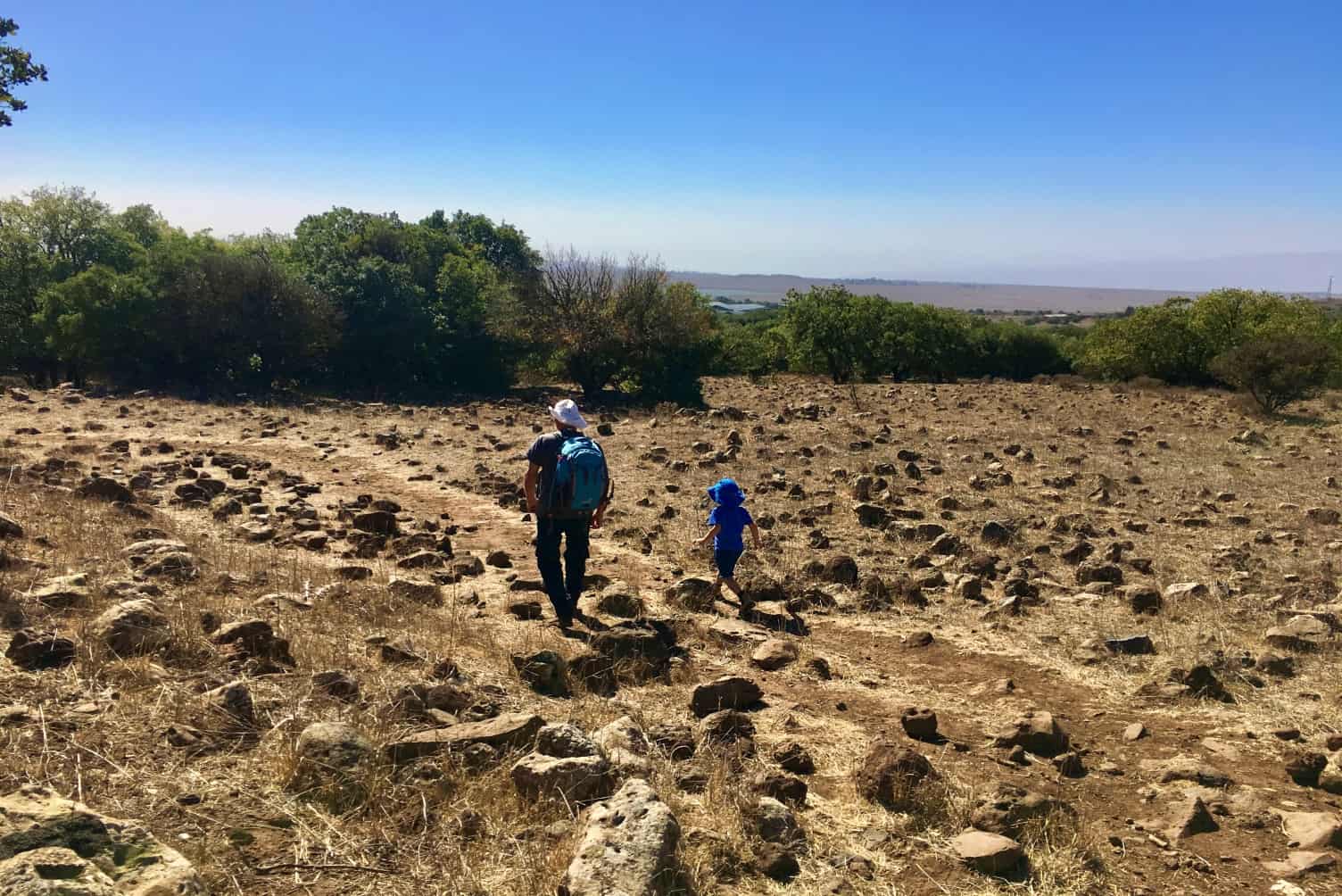Description: At the peak of the Hazeka Ridge (also known as the Bashanit Ridge), there are rare wildflowers that bloom in the fall (October-November) that are considered “harbingers of rain”: Large Sternbergia and Feinbrun’s Autumn crocus. They form bunches of flowers that are yellow, and purple-pink, respectively. You’ll usually find them under trees whose leaves are turning red, or surrounded by basalt rocks on the ground.
Wildflowers: The fall wildflowers here are unique – they are very large flowers, and they are found in big bunches. The Sternbergia and the crocuses are geophytes (plants with bulbs) that store last year’s water and minerals in their bulbs; this allows them to bloom early, when the days get shorter and the temperature begins to fall. Early blooming allows the flower to “draw the attention” of various pollinating insects.
There are other signs of fall in the area: many of the forest trees, right before their leaves fall, bear fruit; this is true of the wild pear, the pistachia, and the oak trees.
Hiking options:
*Walking around the area of the yellow and purple patches of flowers (Sternbergia and crocus), near the IDF base, with a view of the Golan Heights and of Syria.
*A short walk in the Hazeka Forest. The trail is marked (in green), and begins right underneath the army base and the parking lot; on the other side of the road is a gate in the cattle fence, near a big sign marking the Golan Trail. You can go as far as you’d like, and then come back the same way.
*For serious hikers (and for those who brought two cars), you can hike the trail into the forest, and go from beneath the IDF army base all the way to beneath the tel. Park the car, find the big Golan Trail sign (the trail marker is blue-green-white), and begin hiking. The second car needs to be left beforehand at the end of the trail, about one kilometer south of Alonei Habashan Junction.
About 50 meters after you’ve crossed the cattle gate and passed the Golan Trail sign, you’ll arrive at a rocky area with big yellow Sternbergia and big purple and pink crocuses. If you’re lucky and have arrived when they are the height of the blooming season, you will see them then entire length of the hike. These bright colors against the black basalt rocks is a treat to hikers, photographers, and nature lovers alike. If you’ve chosen to do the short hike, you can turn around and go back to your car.
For those hiking the long trail, continue with the trail marker that goes by oak and pistachia trees. Beyond the trees, you’ll see the unique views of the Golan, with volcanoes, and reservoirs. Continue your descent on the path, cross a dirt road, and after one kilometer, you will arrive at a jeep road. Cross the road, leave the Golan Trail, cross a cattle gate, and ascend a green trail. In the spring (March and April), you can see here the majestic Lortet’s iris in various shades of purple. After another kilometer, you will reach the ruins of a Circassian village known as Juweza. This is a perfect place to stop and rest near the spring, in the shade of the poplar trees.
After another 500 meters, you’ve reached the end of the trail on Road 98, where you’ve left your car.
Juweza: This village, like the other Circassian villages in the Golan (Ramtaniya and Hushniya), was one of 13 such towns that were established in the Golan at the end of the 19th century. The Circassians, who were brought here with the encouragement of the Ottoman Empire, were fierce warriors originally from the Caucasus Mountains. They had fought the Russian Czars that tried to invade their land, but after they were persecuted because they were Moslems, they escaped to the Ottoman Empire. Thousands of them were brought to the Golan area by the Ottoman government, who wanted to stabilize the security situation in the area. The Circassians succeeded in planted roots in the area, and they built agricultural villages with their own architectural and cultural traditions that they brought from their native land. Their houses were built from basalt stone, and they covered their homes with red-colored Marseilles roof tiles; you can see examples of these houses when you look into the nearby Circassian villages of Barika and Bir Ajam, located just over the Syrian border.












 תפריט נגישות
תפריט נגישות







